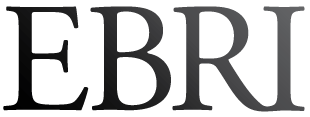Summary
Employers today offer health coverage because of their belief that offering it has a positive impact on the overall success of the business.
In this Issue Brief, we examine how the availability of employment-based health coverage has been changing. We examine employer sponsorship of coverage as well as employee eligibility for coverage. We also examine trends in plan choice, plan types offered, private health insurance exchanges, self-insurance, dependent coverage, premiums, employee and employer contributions toward premiums, cost sharing for medical services and prescription drugs, and high-deductible health plans (HDHPs).
Key Findings:
- In 2023, 46 percent of employers provided health benefits to their employees, down from 56.4 percent in 2008. This decline can largely be attributed to smaller employers, particularly following the implementation of the Patient Protection and Affordable Care Act (ACA) in 2010.
- In 2023, 78.8 percent of employees were eligible for health benefits, a slight increase from 78.1 percent in 2008. Although most employees work for employers that offer health benefits, not all employees opt to enroll in these plans. The take-up rate, representing employees eligible for health insurance who actually enroll, demonstrated a downward trend, from 78.7 percent in 2008 to 68.8 percent in 2023.
- In 2023, 55.5 percent of employers offered two or more health plan options to their employees, which marks an increase from 38.7 percent in 2008.
- The adoption of private health insurance exchanges has generally increased over the years, especially among smaller employers. The overall adoption rate was 23.7 percent in 2018 and rose to a peak of 30.7 percent in 2022.
- The percentage of employers offering at least one self-insured plan has shown interesting trends over the years. It increased from 34.2 percent in 2008 to a high of 41.9 percent in 2020, before slightly decreasing to 37.9 percent in 2023. Surprisingly, large employers — traditionally having the highest self-insurance rates — experienced a decline in offering these plans. Meanwhile, the proportion of employees enrolled in self-insured plans has shown modest fluctuations. It rose from 55.2 percent in 2008 to 60.0 percent in 2015 before settling at 57.4 percent in 2023.
- From 2008 to 2023, health insurance premiums rose significantly across all company sizes. Single-coverage premiums increased from $4,386 to $8,182, while family-coverage premiums increased from $12,298 to $23,938. Employee contributions followed this upward trend. However, the percentage of premiums paid by employees showed smaller changes: single-coverage contributions remained stable around 20 percent, and family-coverage contributions rose slightly, from 27.6 percent to 28.8 percent.
- The percentage of employees enrolled in health plans with deductibles significantly increased, from 70.7 percent in 2008 to 89.4 percent in 2023. During this period, average deductibles for both single and family coverage rose. For single coverage, the average deductible climbed from $869 in 2008 to a peak of $2,004 in 2021, then slightly decreased to $1,930 in 2023. For family coverage, deductibles increased from $1,658 in 2008 to a peak of $3,868 in 2021 before slightly declining to $3,733 by 2023.
- The prevalence of copayments has declined overall. In 2023, 57.9 percent of employees were enrolled in plans with office-visit copayments, down from 71.8 percent in 2008. Changes in coinsurance levels have shown less volatility.
- HDHPs have gained popularity, with a noticeable increase in the percentage of enrollees in a single plan from 24.6 percent in 2010 to 54.6 percent in 2023, peaking at 60.1 percent in 2021, and with the percentage of those in a family plan increasing from 23.7 percent in 2010 to 56 percent in 2023, peaking at 58.4 percent in 2021.

